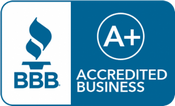
Changes in Lease Accounting
Published on December 09, 2013
It is quite common for businesses to lease assets for their operations. Organizations of all shapes and sizes – retailers, airlines, even professional services firms – make use of leasing. But businesses that lease property and equipment may soon have to start treating those leases differently on their balance sheets.
Under current regulations, when a business borrows money to buy a machine (for example), the loan or bond payments are recorded on its books as a liability, and the machine as an asset. If it leases that machine, current rules usually let the firm keep both the asset and the liability off its balance-sheet. This generally boosts the company’s financial image. By contrast, the proposed new requirements would put leases back on company balance sheets and give analysts and investors a better idea of a company’s liabilities and expenses. Leases would be classified as Type A for non-property arrangements, such as pieces of equipment, and Type B for property. Under a Type A lease, the lessee would be expected to consume more than an insignificant portion of the asset and would have a significant economic incentive to potentially purchase the underlying asset. Under a Type B lease, the lessee would not be expected to consume more than an insignificant portion of the underlying asset. “Insignificant” is, of course, subjective. Regardless of the classification, the asset and the liability would be recorded on the company balance sheets at the lease inception. The lease classification would only affect how the monthly payments are charged off; either as a financing transaction with a portion charged to interest and the asset separately amortized for Type A, or as a single period cost recognized on a straight-line basis for Type B.
These new regulations are meant to provide greater transparency around leasing transactions and comparability of financial reporting, though not everyone is cheering. Opponents of reform think the change is a costly solution to a minor problem. People who read company accounts—equity analysts, credit-rating agencies, banks and shareholders—are more than able to take into account a firm’s lease obligations when they assess them. Further, the change would force businesses to set up central databases to record every lease of a year or more, even for little things like coffee-machines that are now lumped into branch offices’ petty expenses. But additional accounting headaches are not the only worry. If measures of a firm’s financial strength, such as debt-to-equity ratio, look worse, that firm may see a rise in its cost of borrowing. What’s worse, some firms may even find that the rise in their debt ratios puts them in breach of contract on their existing loans. This could create some serious difficulties for businesses.
However, the case for reform is solid. Banks and bondholders are being underpaid for the risks they run when lending to firms that use the current lease-accounting rules to hide a lot of what is, essentially, debt. Even sophisticated equity analysts struggle to understand the obscure and complex leasing arrangements some companies engage in, making it hard to put a fair value on their shares. Despite the many objections being made, I am doubtful this kind of reform is going to be scrapped altogether.
The important thing to know is that a change is coming; the final standard is expected to be issued in early 2014. There is not expected to be any “grandfathering” provisions, so any existing leases would need to be evaluated. The effective date has not been set but make sure you start inventorying contracts that need consideration and put the right people and processes in place to address any changes that may come.






